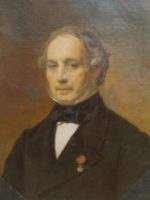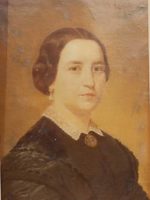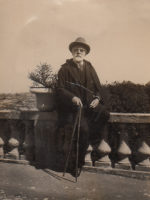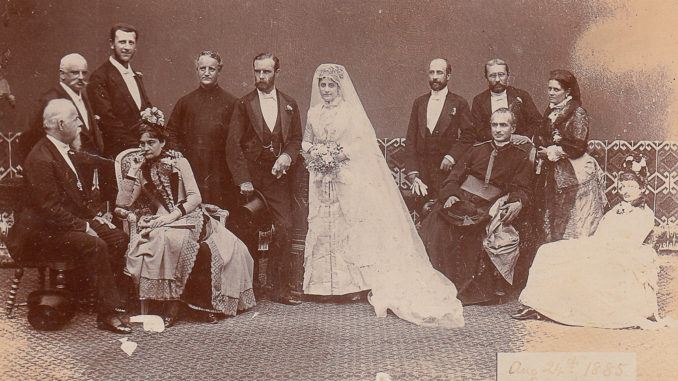The Messina Family
In the 13th century, Charles of Anjou and Maine was granted the island of Sicily by the Pope, and crowned King of Sicily in Rome on the feast of the Epiphany in 266. When some years later, through the desire to raise money to conquer, as he thought, Byzantium,the taxes levied on the Sicilians were so severe that they fomented unrest, which the Frankish army on the island proceed to suppress. An attack was made on the city of Taormino, which Chevillo Messina, with his company of 500 archers, helped to repulse. The disturbances in the island continued, culminating in the episode of the insult offered by some Frankish soldiers to a Sicilian women outside the church of Santo Spirito, Palermo, at which the crowd set upon the instigators and killed them. In the ensuing uprise, over 2000 Frankish men, women and children were massacred on March 30th 1282, an event immortalised by Verdi in his opera ‘Sicilian Vespers’.
King Peter !! of Aragon had for years laid claim to the kingdom of Sicily through his wife Constance, a daughter of Roger,a former king of the island. He knew of the unrest caused by the oppressive taxation and by what the islanders considered to be the neglect of their interest by Charles of Anjou. By secret negotiation with the influential figures in Sicily, he had been planning to pursue his claim when Charles of Anjou launched his expected attack on the Byzantine Empire. The spontaneous, premature uprising precipitated the earlier implementation of his plan and he seized the opportunity to take the island. Later that year (1282) he appointed Gugliemmo Messina, a powerful and leading citizen of Sicily, to be ambassador to the court of Aragon.
The island scene in the following years was not a peaceful one: it was twenty years before the wars of the Vespers came to an end with the Treaty of Caltabellotta, 1302. But this did not mean peace, for now Naples challenged Aragon’s supremacy, but without sucess. Added to this, kings had to facce the internal factions of the ‘Latins’, the older Sicilian nobility, and the ‘Catalans’, and Aragonese ‘newcomers’. The Messina family belonged to the former group and it was expedient to keep their support. Their importance was acknowledged when Conrad Messina was appointed as Captain of the King’s Guard during Peter !!’s reign (1337-1342). When Peter !!’s son Luois succeeded to the throne as a minor, Conrad’s son, Augustine, held a similar office. Another member of the Messina family, Luca, a member of the Aigustinian Order, being renowned for his learned exegesis of Scripture and his persuasive preaching, was appointed as Abbot of Santa Luca during Louis’ and Frederick !!!’s reign.
Frederick !!!, brother of Louis, came to the throne in 1355, and five years late, Olivero Messina pledged his support to the King. At this time, Augistine’s son Giovanni, was appointed as the keeper of the castle at Noto where he settled with his family and where his descendants in their turn took prominent positions in the political and judicial life in the city.
A branch of the Messian family moved to Palermo, and Bernardo was recognised as a nobleman of the city in 1371.
Some years later in 1399 King Martin ! of aragon, the humane. wha was in Sicily working to gain the throne there for his son, Martin, confirmed the holding of the Baronies of Gurafi and Commicchio to Giovanni Messina, the foremost nobleman of the city.
Gionvanni Bernardo Messina was appointed by John 11 of Aragon (John 1 of Sicily) as secretary to the Assembly of the Kingdom of Sicily in 1478 and Luca Messina held the same position in the first quarter of the 16th century. This line of the family then became extinct.
Don Orofino Messina is mentioned in the list of nobles of the city in 1516 and his son, Pietro Antonio, was created a Knight of Malta in 1567. Charles Messina, recorded as having been wounded in the capture of Golsone in 1644, was also made Knight of Malta. Several members were senators of Sicily in those two centuries – Stafano in 1551, Vincenzo in 1554 and Antonio in 1651 and others made outstanding contributions to public life in diverse ways, – as men of letters, poets, soldiers administrators, as men of piety and as theologians. In the latter part of the 17th century Francesco Messina, a member of the Society of Jesus, was sent on a missionary to the Philippines, where he died in 1682.
It is not surprising that such a flourishing, celebrated family should , by marraige, have contracted alliances with other noble lines nor that it influence should have spread beyond the city from which it took it patronm.
One branch crossed the straits of Messina to Calabria, in mainland Italy, where they are recorded in 1594 as being nobles of Monteleone, being the titles and rights of Barons there. Other branches were established in Sicily – in Palermo, Noto and Pallazola.
The first established connection with Malta comes from the Noto line and dats from the 15th century. In 1420 Berto Messina is named as one of the principal citizens in a council of the Maltese inquisition and he became a magistrate there eleven years late.
Antonio de Bartolomeo Messina became a lawyer in Vittoriosa in Malta and founded the Chapel of S. Salvatore in the Church of the Annunciation there.
Jacopo Messina was a skillful engineer and in the 17th century was given commissions as a civil and military architect of fortifications in the island.
More complete records are available from the 18th century. Count Giovanna Messina moved from Monteleone to Bagnare on the ‘tow’ of Italy and his son Bruno, who married Rosario Aren Spina, brought up his four sons there. Theses children distinghuished themsleves in different fields. Guiseppe became Rector of the seminry at Teano in the districy of Caserta, north of Naples: Giocacrisotamo, a theologian and Rector of the Univversity of Catania, on the east coast of Sicily, was late consecrated as Bishop of Nola, a diocese about twenty kilometers east of Naples: Basilo, was a doctor of physics and jurispudence at Bagnare: To his eldest son, Giovanni, our hearts go out. A lawyer and theologian, he was appointed as Governor-Judhe of Reggio Calabria and catanzaro. Unfortunately he fell foul of the victorious French armies, and by the order of Napoleon was shot in 1800. His moving final words to his family can be read in the testimony he wrote on the eve of his execution. Addressing his third child, Rosario (his secons son) he wrote “You are the treasure of my heart, for you I grieve the most. In your infant ailments, I gave you all my casre and attention and now you are snatched from me”.


It was this treasure of Giovanni’s heart, Rosario (1796-1875), who moved to Malta where he married Maria de Ataliottis of that island and had five children. He obviously took to heart his father’s valedictory counsel of 1800 (“A great and noble heart leads to virtue…One must have the courage to fight evil…I wish you, my beloved children, that true and heroic valor the conquers evil…”), because in 1864 Pope Pious 1X made Rosario a hereditary Papal Count as a reward ‘for services rendered to the church’ and in consideration on the many benefactions Rosario had made. We do not know what the services were but it could be that he remained loyal to the Pope at a time when the temporal power of the Papal States was under attack, when religious orders were being banned and deprived of privileges and liberal-minded catholics wanted the church to come to terms with new governments being established in the Italian States and other parts of Europe.
This papal honor was hereditary. Of his two sons, Giovanna had a daughter, Maria: Francesco died leaving no heirs. The eldest daughter, Lucia, married but has no children; the youngest, Concetta, married an english man, Harman Grisewood, in 1875 and had three daughters and five sons

Rosario’s fourth child, his second daughter, brings us back to our main theme. She was born in Valletta on October 18th 1850, being baptised Guiseppino (Josephine – and frequently addressed until the end of her life as the Countess Jospehine).

Immediately after their marriage, Edward and Josephine moved into Villa Frere, Pieta, Malta, which was to be their home throughout their married life. They rapidly established themselves in Maltese society. Josephine, a devout woman, was soon involved in charitable works. Casa Leone, St Julians, is today one of the church houses for the elderly, but it was built at the end of the 19th century for the Sisters of the Little Company of Mary, who came from Italy to found a branch house in Malta. They needed donations from the people of Malta until they were self supporting and contributions were also needed for the building of the convent which was dedicated in 1893 and commemorated the episcopal jubilee of Pope Leo X111. Josephine’s name is engraved on the marble tablet which records those benefactors and which is still in place at the entrance of the building.


Thank you for all the information on the Messina family, my grt grt grandmother was Concetta Messina
The grandmother of my grand mother Eileen Hoare nee Creagh , her cousin was Harman grisewood creator of the third programme later radio three at the BBC , a writer and literary executor of the great Welsh poet and artist David Jones another cousin was Elizabeth Douglas,later countess of Craven
They were quite an interesting bunch
Thanks for your interest. I have many pictures of Harman Grisewood. – one of them is in the Villa Frere Post- first picture. When I have time I will be adding more pics. There are also some others in the Photo Album tab.
Dear Seaburne ,
Would it be possible to get copies of your photographs of Josephine,Concetta Messina and Harman Grisewood,for family records,my grandmothers grandparents were Harman Grisewood and Concetta Messina,
Many thanks
Joe Hoare
Countess Jospehine and Captin Edward Price are my great great grandparents. It’s amazing learning more about her and the entire family
Thanks for your interest in this site. My father and Charlie – assume your Grand father were close. My father flew down to Boston and spent time with Charlie when he came to Canada to visit me. I also spent a good week with him back in 1969 when I was traveling North America. . He took me to Cape Cod ,Plymouth Rock and Boston. Have fond memories of that time.
Dear cousins from the Messina Family,
Just to add some few words regarding the – often forgotten – French Branch descending from Maria Concetta Messina and Harman Grisewood. Their Daughter, my grandmother Gwendoleen Grisewwod (Bognor Manor, Kent, 1886- Rabat, Morocco, 1952) was first married to Captain John Archibald Saint Leger Tredennick (an Irish Gentleman, Kia in France near Rheims in 1918), with whom she had a son, John Tredennick (accidentally dead, aged 12, in Burgundy). She remarried in 1924 with Louis Robert Pelletier Doisy, a valliant French Navy Aviation Pilot Officer, with whom she had 6 children (Charles, Bettina, Geneviève, Robert, Jean and Pierre). I am the son of Jean Pelletier Doisy (1931-2018), a former Colonel in the French Army. He married Jehanne Hême de Lacotte, and they had 3 children: Enguerrand (1962), Marin (1964) and Cyrille (1973) Pelletier Doisy, all married with children. From my part 3 children : Tanguy (1986), Edouard (1988) and Sixtine-Aminata (1992) – and 6 grandsons : Baudouin (2012), Albéric (2014), Foulques (2015), Hélen (2016), Zéphyr (2018) and Hélie (2019). We keep the memory of the Messina Family history and roots in Sicily, Calabria and Malta – with prestigious alliances in all Italy (among others, illustrious Family Barbaro from the Doges of Venice and Ruffo dei Duchi di Bagnara from the Ruffo di Calabria Family, who gave recently its former Queen to Belgium ) -, that we inherited through the Dear Grisewood Family. They are still present in our life and mind and I promiss that they will no go out with the new French Descendants Generation.
With my kindest regards
Marin
Hello, I am not related to the Grisewoods, but can somebody of you confirm whether the (beautiful) lady distributing shamrocks to the London Irish Rifles HQ, 18th Bn, on 18 April 1916 in Chelsea, was Gwendolen Mary Sapientia Anna Crescentia Grisewood? Thank you in advance. If you are not familiar with what I ask, simply type the above on Google or Youtube, and you will see the 2 min film.
Dirk
Thank you Dear Seaburne for the very interesting article regarding the Messina Family that I am a descendant, French Branch, of Gwendolen Mary Anna Thescentia Grisewood (Bognor, Sussex 1886 – Rabat, Morrocco 1952) and Commander Louis-Robert Pelletier Doisy (Brest, Finistère 1898- Dijon, Côte d’Or 1971), who were my grandparents. Gwendolen Grisewood was daughter of Harman Grisewood and Maria Concetta (or Concettina) Messina, daughter of Count Rosario Messina, citizen of Malta, Papal Count 1864, also known as barone of Gurafi and Comichi in Sicily. Because Messina is a very common name in Sicily and Southern Italy and it is difficult to prove links on such a multicentenial period of times, I really doubt that it is possible to establish a direct link, or even a link, between the Messina Family established in Malta before XVI century and the Messina’s of Monteleone, who arrived in the Island at the beginning of XIX Century because of the assassination of Giovanni Messina, the father of Count Rosario, who was governor of Calabria for the Bourbon-Sicily Kings, and who is our direct ancestor that you mentionned. This Monteleone Branch is apparented with the Dukes Ruffo di Bagnara (branch of the most ancient and eminent Napolitan family Ruffo di Calabria who gave a recent Queen to Belgium, Paola spouse of King Albert II) and with the Barbaro Family (Patricians of Venice from the oldest ages). Thanks for your eventual further comments.
Thanks for this and your previous email to me. Sorry for not responding sooner!! It is always very interesting to get information on our ancestors. I will try and update the family history with the information you have given me. Maria Concette I assume is Maria de Ataliottis who had five children with Rosario. In my sight I have one of the children being Josephine(Giuseppina)Raphaella Messina born 1851. Giuseppina would be my Great Grand Mother. Mary Emma Price being my Grandmother. My id in my website is i19 I have some pictures which you might have seen of the Grisewood and Concettina and family members.
I am the daughter of Gabriel Grisewood,brother of Harmon Grisewood (BBC,) In 1959 I spent a summer with Betty and Francois Barthe and their five children. Have always wanted to renew contact with the French part of my family.
In fact, Maria-Concetta (or Concettina -1855-1939) is the third daughter of Count Rosario Messina and Maria de Ataliotis.
She was the youngest sister of Giuseppina Messina-Price. She married Harman Grisewood.
Amongst her children, Gwendolen Grisewwod, my grandmother.